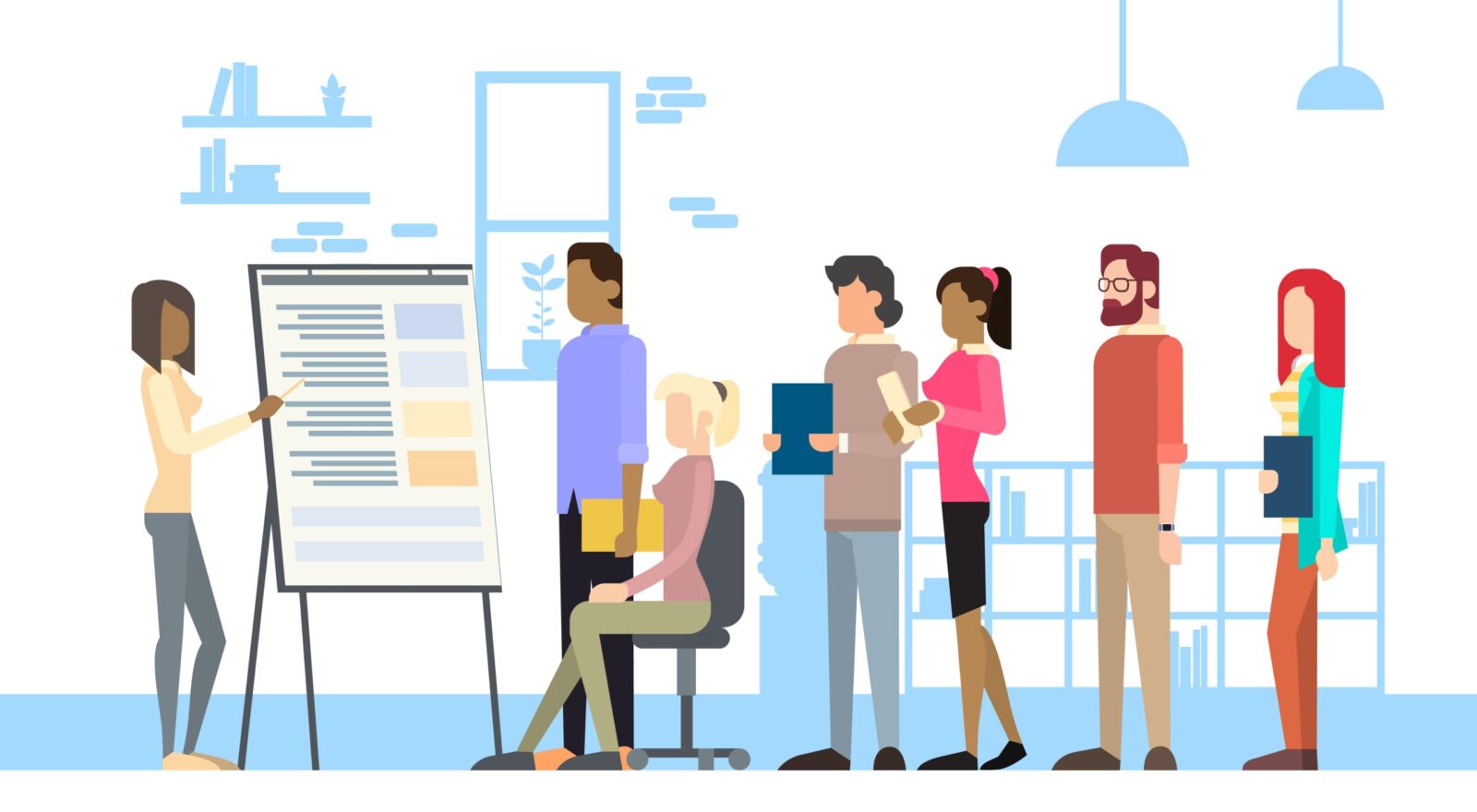Facilitation is quite an art. While it may seem similar to presenting, during a presentation you are perceived as the expert and everyone in the audience is there to listen to you. Facilitation is also distinct from training, where you are conveying a skill. As a facilitator, you are bringing people together to solve a problem or create a new strategy.
There are some facilitation techniques that are so easy to implement that it almost seems unnecessary to write about them, yet so often I am in meetings where I wish the facilitator would use them. If these tips are new to you, let me encourage you to try them!
Start the Meeting With the Group Talking
If you are seeking a high degree of input and collaboration during a meeting, get participants talking quickly, certainly within the first 10 minutes. The longer participants sit quietly listening to an overview of the agenda or a review of meeting notes from last month, the less likely they will be to engage. Begin the meeting with a question everyone will have an opinion about and everyone will want to discuss. Here are some questions that might be appropriate for starting your discussion: “What’s the buzz about this in your department?” “Please share how your employees have reacted to…” “How do you feel about the implementation? What do you see as the pros and cons? Let’s list the pros first.” “How did this work in your department? Region?”
Use Flip Charts
When conducting in-person meetings, have at least one old-fashioned flip chart in the room. Flip charts, while often considered “low tech,” are more helpful than projection methods for charting participants’ comments since they keep the focus on the facilitator. A flip chart allows the facilitator to “chart” the groups’ ideas. Additionally, the chart provides a focus if the group needs to be pulled back together. And, as a bonus, when the facilitator stands up and holds the marker, he or she naturally commands the attention of the group. If there is a significant amount of data to capture, use a handout or shared electronic document in addition to flip charts.
Vary Your Position
A good way to gain control or reshape dialogue during an in-person meeting is to stand. Movement will shift the focus of the group. When you stand you signal, “I am in charge at this moment. I am going to help us refocus.” When you sit back down you signal, “I am a part of the group, and l am listening rather than facilitating right now.”
Respond When Individual Participants Separate From the Whole Group
It’s common for participants to start talking to one another in sidebar conversations. You can get upset by this or you can view it as energy around the topic and a desire to share it with one another. If the chatting on the side is quick, leave it alone. If it continues or is distracting for the other participants, you could walk over and just stand near the talkers. This only works if you stood earlier in the meeting. Another technique is to say, “[Participant’s Name], I know you care about this so I want to be sure that we have the appropriate opportunity to consider your input. Could we schedule a time to discuss more fully?” Another option is to just ask, “Can I get everyone’s attention again?” You can also say, “You two seem excited, and we would all like to participate in the discussion. Loop us all in so we can share in the excitement.” Avoid embarrassing the chatty participants since it would change the dynamic of the entire meeting. It also would create a hierarchy that should be avoided if possible.
Remember to Summarize
One of the key ways that a facilitator can help the group is to summarize frequently. Don’t wait until the end of the meeting. Summarize along the way.
Handle Resistance
Sometimes there are resistant participants. Despite how you may feel when groups are being resistant, resistance is actually good. It is uncomfortable in the moment, but resistance signals engagement. Even if a participant’s comments are negative, it is better than a lack of engagement which may signal apathy or hopelessness.
There are tangible strategies for improving your ease when facilitating groups that are defensive, obstinate, or just plain rude. But, that’s a whole other blog!
Facilitating meetings effectively is undoubtedly a learned skill. Pay special attention to the meetings you attend as a participant. Does the facilitator make it seem easy? What are the specific phrases and methods of engagement that he or she uses to achieve meaningful discussions and great outcomes? Then make a note to incorporate these tactics and some of the suggestions above into your own meetings.
Excellent facilitators take their role seriously. If you are finding that you are in the role of facilitator, but you are uncomfortable, take a facilitation class. There are basics that you can learn and practice so it will become comfortable and fun to take your groups to the next level.





0 Comments